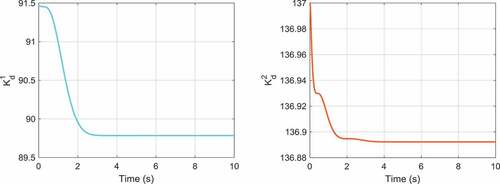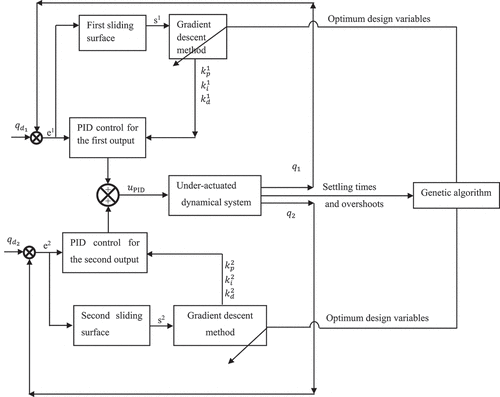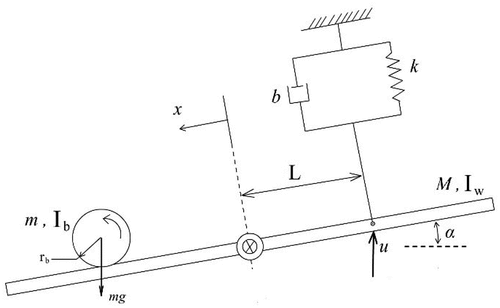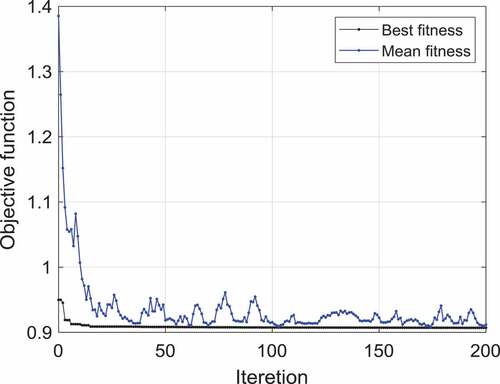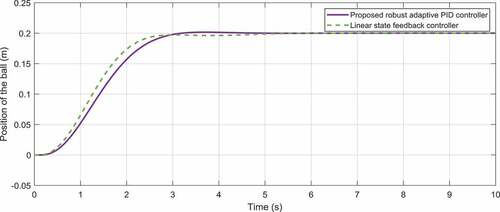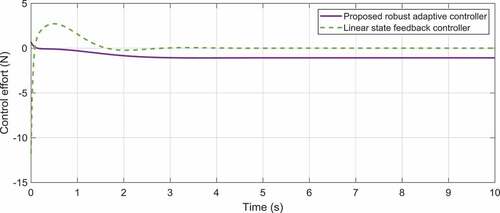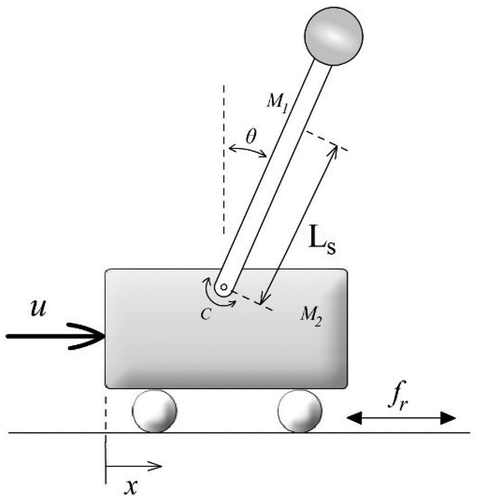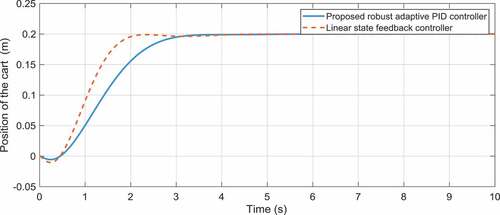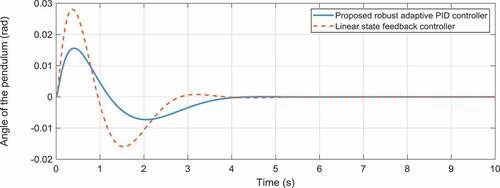Figures & data
Table 1. The physical specifications of the ball-beam system
Table 2. The optimal values of the control gains for the proposed approach
Table 3. The comparison of the settling times and overshoots for the ball and the beam
Figure 5. The time behaviors of the proportional gains for the first and second outputs of the ball-beam system

Figure 6. The time behaviors of the integral gains for the first and second outputs of the ball-beam system
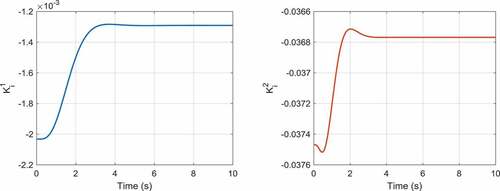
Figure 7. The time behaviors of the derivative gains for the first and second outputs of the ball-beam system
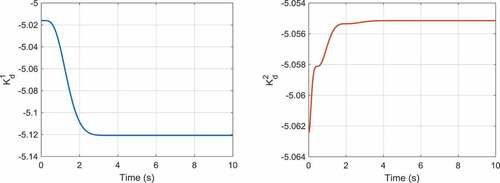
Table 4. The physical characteristics of the cart-pole system
Table 5. The optimum gains of the proposed control approach for the cart-pole system
Table 6. The comparison of the settling times and overshoots for the cart-pole system
Figure 13. The time behaviors of the proportional gains for the first and second outputs of the cart-pole system

Figure 14. The time behaviors of the integral gains for the first and second outputs of the cart-pole system
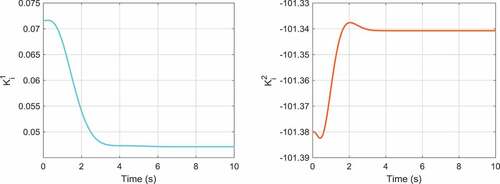
Figure 15. The time behaviors of the derivative gains for the first and second outputs of the cart-pole system
